The next era of P2E: the convergence of games, AI agents and cryptocurrencies

Reprinted from panewslab
01/21/2025·3MAuthor|Sid @IOSG

The current state of Web3 games
Web3 gaming as an industry has taken a back seat to both primary and public market narratives as newer and more focused narratives emerge. According to Delphi's 2024 report on the game industry, the cumulative financing amount of Web3 games in the primary market is less than US$1 billion. This is not necessarily a bad thing, it just shows that the bubble has subsided and the current capital may be compatible with higher quality games. The picture below is an obvious indicator:
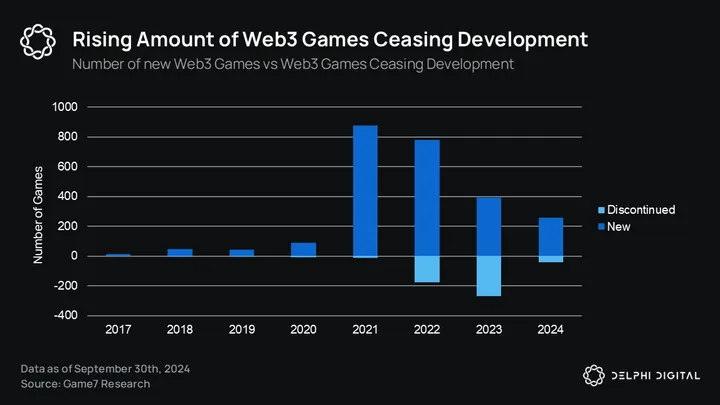
Throughout 2024, gaming ecosystems such as Ronin have seen a huge surge in user numbers, almost rivaling the glory days of Axie in 2021 thanks to the emergence of high-quality new games such as Fableborn.
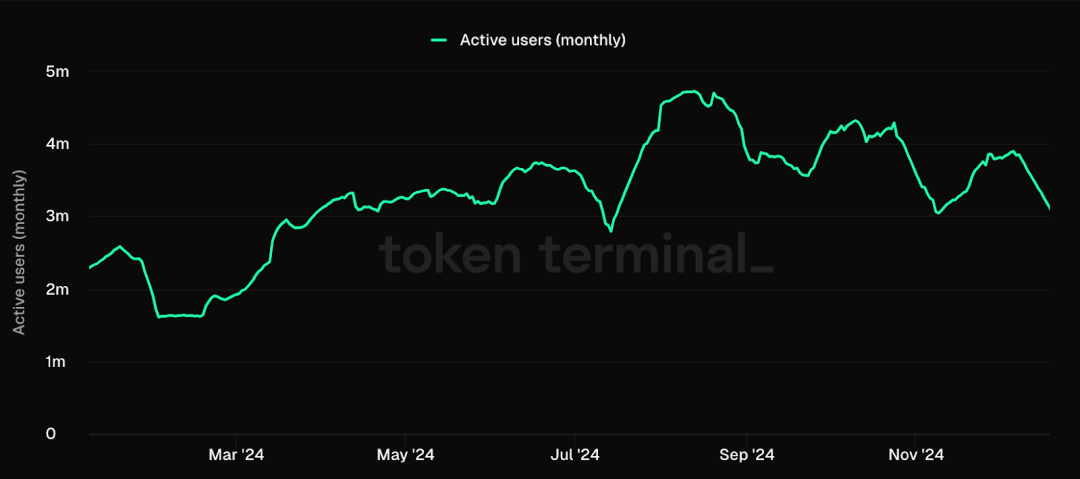
Game ecosystems (L1s, L2s, RaaS) are becoming more and more like the Steam of Web3. They control distribution within the ecosystem. This has also become an incentive for game developers to develop games in these ecosystems because it can help them obtain player. According to their previous reports, the user acquisition cost of Web3 games is approximately 70% higher than that of Web2 games.
player stickiness
Retaining players is just as important, if not more important, than attracting them. Although there is a lack of data on player retention rates for Web3 games, player retention rates are closely related to the concept of "Flow" (a term coined by Hungarian psychologist Mihaly Csikszentmihalyi).
"Flow state" is a psychological concept in which players achieve a perfect balance between challenge and skill level. It's like "getting in the zone" -time seems to fly by and you're completely immersed in the game.
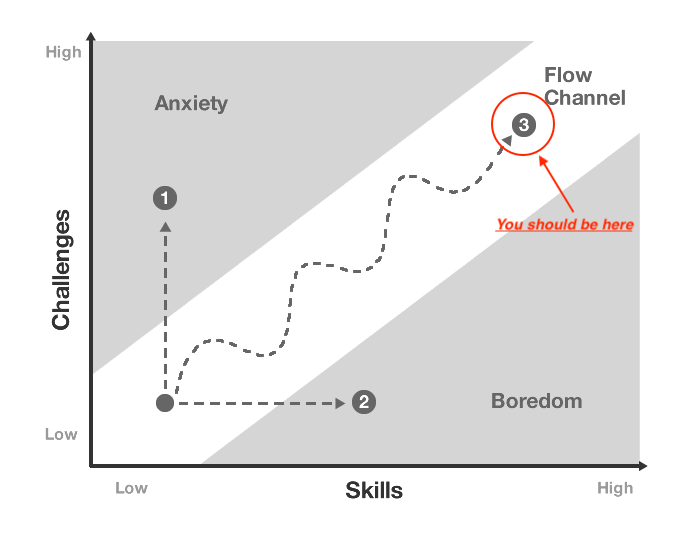
Games that continuously create a flow state tend to have higher retention rates due to mechanics like:
#advancedesign
Early game: simple challenges to build confidence
Mid-game: gradually increasing difficulty
Late game: complex challenges, mastering the game
As players improve their skills, this granular difficulty adjustment allows them to stay within their own pace
#Participate in the loop
Short term: instant feedback (kills, points, rewards)
Mid-term: Completion of levels and daily tasks
Long term: character development, ranking
These nested loops maintain player interest over different time frames
#The factors that destroy the flow state are:
1. Improper difficulty/complexity settings: This could be due to poor game design, or it could even be an imbalanced matchmaking due to not enough players
2. Unclear goals: game design factors
3. Delay in feedback: game design and technical issues due to
4. Intrusive Monetization: Game Design + Product
5. Technical issues/lags

The symbiosis of games and AI
AI agents can help players achieve this flow state. Before discussing how to achieve this goal, let us first understand what kind of agents are suitable for use in the game field:
LLM and reinforcement learning
The key to game AI is: speed and scale. When using LLM-driven agents in games, each decision requires invoking a huge language model. It's like having a middleman before every step. The middleman is smart, but waiting for his response makes everything slow and painful. Now imagine doing this for hundreds of characters in a game. Not only is it slow, but it's also expensive. This is the main reason why we haven't seen large-scale LLM agents in games yet. The largest experiment we've seen so far is a 1,000-agent civilization developed on Minecraft. If you have 100,000 concurrent agents on different maps, this will be very expensive. Players will also be affected by traffic disruptions as each new agent added causes lag. This destroys the flow state.
Reinforcement learning (RL) is a different approach. We think of it like training a dancer, rather than giving each other step-by-step instructions through a headset. With reinforcement learning, you need to spend time early on teaching the AI how to "dance" and how to respond to different situations in the game. Once trained, the AI will flow naturally, making decisions in milliseconds without the need for upward requests. You can have hundreds of these trained agents running in your game, each able to make independent decisions based on what they see and hear. They are not as articulate or flexible as LLM agents, but they do things quickly and efficiently.
The real magic of RL comes when you need these agents to work together. Where LLM agents require lengthy “conversations” to coordinate, RL agents can develop an implicit rapport in training – like a football team that has been training together for months. They learn to anticipate each other's movements and coordinate naturally. While this isn't perfect, sometimes they make mistakes that LLMs don't make, but they can operate at a scale that LLMs can't match. For gaming applications, this trade-off always makes sense.
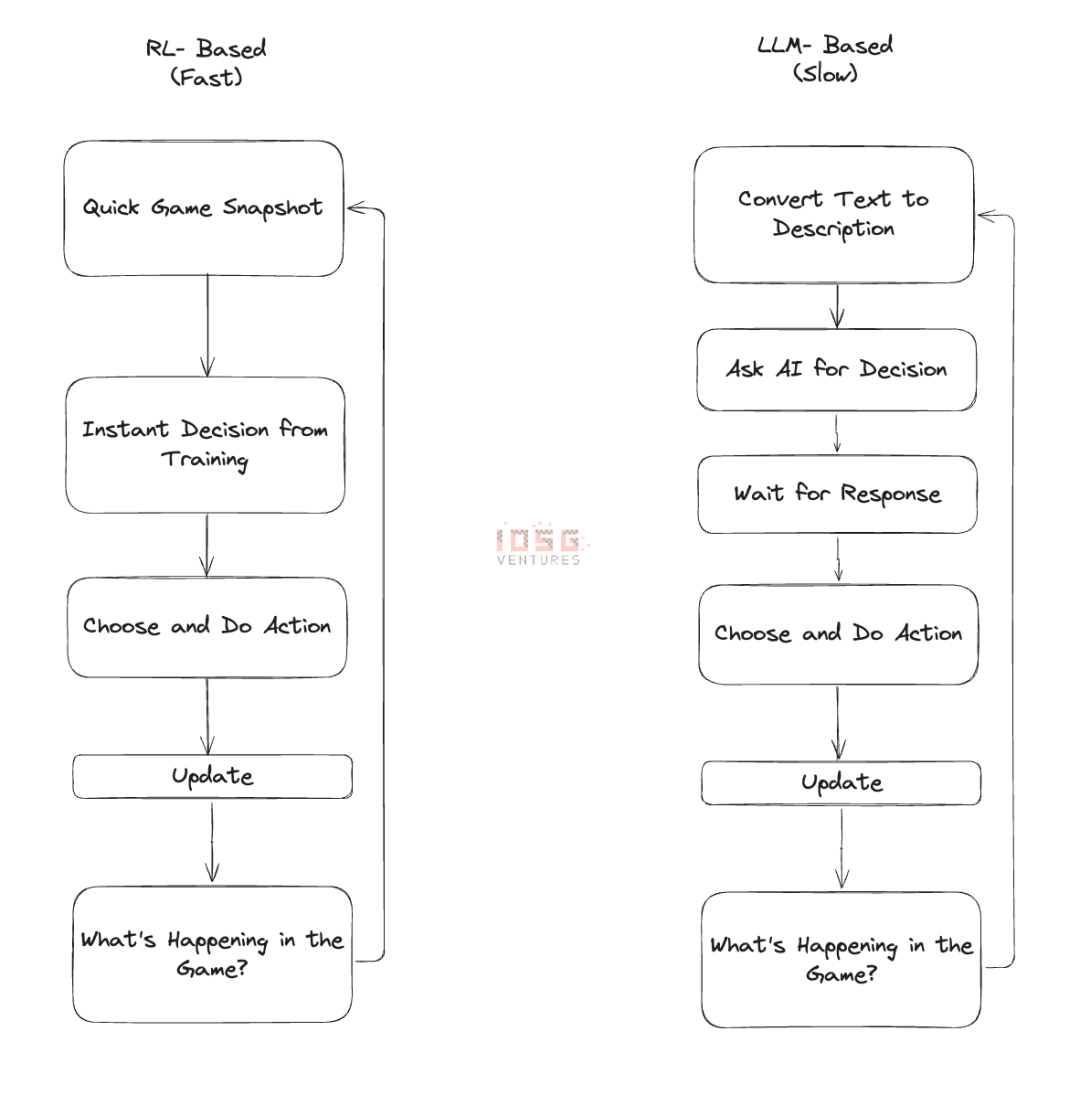
Agents and NPCs
Agents as NPCs will solve the first core problem facing many games today: player mobility. P2E was the first experiment to use cryptoeconomics to solve player liquidity problems, and we all know how it turned out.
Pre-trained agents serve two purposes:
- Populate the world in multiplayer games
- Maintain the difficulty level for a group of players in the world, keeping them in a flow state
Although this seems very obvious, it is difficult to build. Independent games and early Web3 games do not have enough financial resources to hire artificial intelligence teams, which provides an opportunity for any agent framework service provider with RL as the core.
Games can work with these service providers during playthroughs and testing, laying the foundation for player mobility when the game launches.
This way, game developers can focus on game mechanics to make their games more interesting. As much as we love integrating tokens into games, games are games, and games should be fun.
Agent player
League of Legends, one of the most played games in the world, has a black market where players train their characters with the best attributes, while the game prohibits them from doing so.
This helps form game characters and properties as the basis for NFTs, creating a market to enable this.
What if a new subset of “players” emerge that serve as coaches for these AI agents? Players can coach these AI agents and monetize them in different forms, such as winning matches, and can also serve as "training partners" for esports athletes or passionate players.
The return of the Metaverse?
It's possible that early versions of the Metaverse simply created an alternate reality rather than an ideal reality, and therefore missed the mark. AI agents help the inhabitants of the Metaverse create an ideal world - an escape.
In my opinion, this is where LLM-based proxies can come in handy. Maybe someone could populate their world with pre-trained agents who are domain experts and can hold conversations about things they like. If I create an agent trained on 1000 hours of Elon Musk interviews and users want to use instances of that agent in their world, then I can get rewarded for that. This creates a new economy.
With metaverse games like Nifty Island, this can become a reality.
In Today: The Game, the team has created an LLM-based AI agent called "Limbo" (which released a speculative token), with the vision of multiple agents interacting autonomously in the world while we watch 24x7 of live streaming.

How does Crypto fit into this?
Crypto can help solve these problems in different ways:
- Players contribute their game data to improve the model for a better experience, and are rewarded for it
- Coordinate with multiple stakeholders such as character designers and trainers to create the best in-game agents
- Create a marketplace for in-game agent ownership and monetize it
There's a team that does all of these things and more: ARC Agents. They are addressing all the issues mentioned above.
They have the ARC SDK, which allows game developers to create human-like artificial intelligence agents based on game parameters. With a very simple integration, it solves player mobility issues, cleans and turns game data into insights, and helps players stay in the flow by adjusting difficulty levels. To do this, they used reinforcement learning (Reinforcement Learning) technology.
They originally developed a game called AI Arena, where you basically trained your AI character to fight. This helped them form a baseline learning model that forms the basis of the ARC SDK. This creates something of a DePIN-like flywheel:
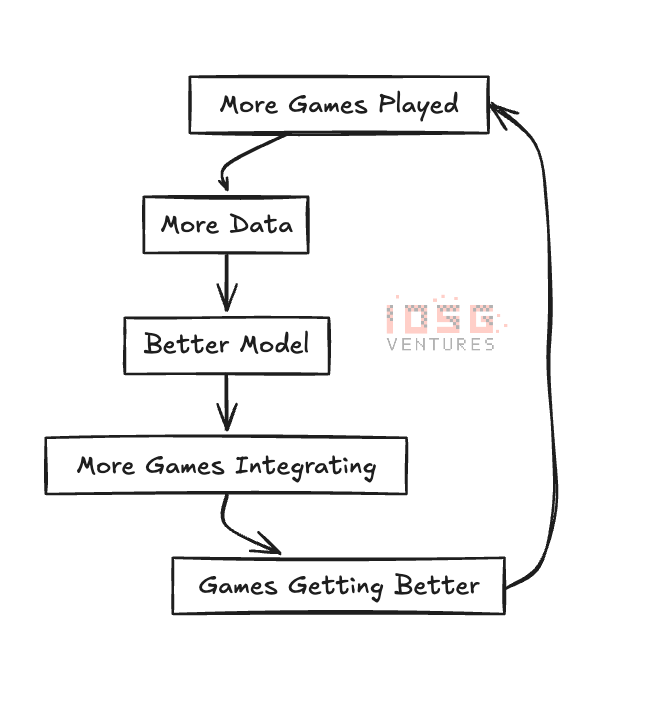
All of this is coordinated with their ecosystem token $NRN. The Chain of Thought team explains this very well in their article about ARC proxies:
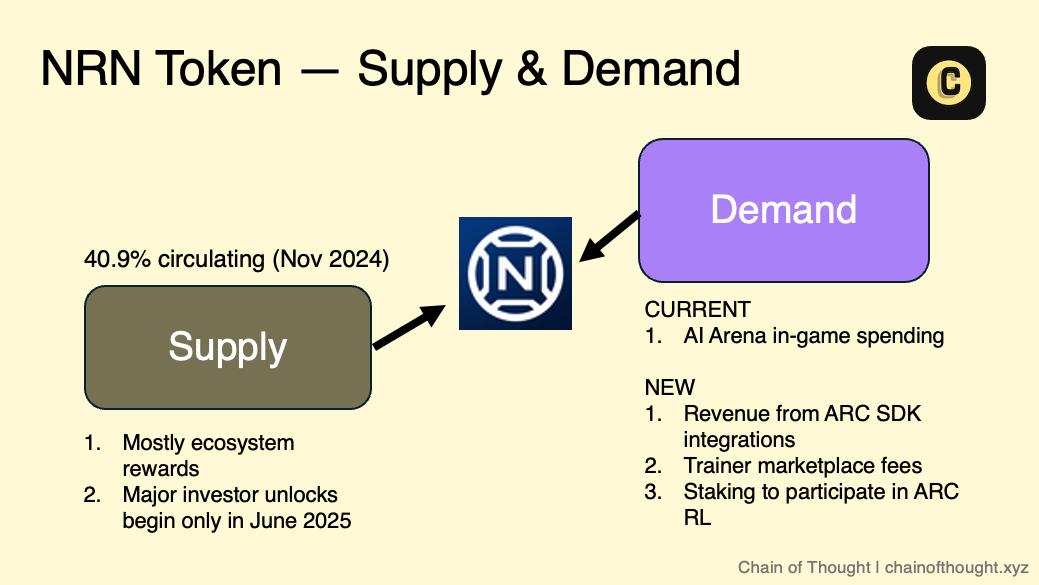
Games like Bounty are taking an agent-first approach, building agents from the ground up in a Wild West world.

Conclusion
The fusion of AI agents, game design, and crypto is not just another technology trend, it has the potential to solve various problems that plague indie games. The great thing about AI agents in gaming is that they enhance what makes games fun—good competition, rich interactions, and challenges that keep you coming back for more. As frameworks such as ARC agents mature and more games integrate AI agents, we are likely to see entirely new gaming experiences emerge. Imagine a world that is alive not because there are other players in it, but because the agents within it are able to learn and evolve with the community.
We're moving from a "play-to-earn" era to a more exciting era: games that are both truly fun and infinitely scalable. The next few years will be exciting for developers, players, and investors focused on this space. The games of 2025 and beyond will not only be more technologically advanced, but they will fundamentally be more engaging, engaging, and alive than anything we've seen before.



 chaincatcher
chaincatcher